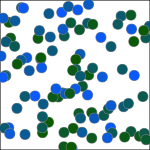Friday, November 1, 2013 at 12:35 AM
As we announced on the Official Google Blog nearly a year and a half ago, today we’re retiring iGoogle. Moving forward, iGoogle will redirect to www.google.com. If you’ve been using iGoogle gadgets to access information from Google products like Gmail and Finance, you can continue to do so via our new app launcher.
We know that many of you enjoyed your customized iGoogle experience, so if you’re looking for alternatives, there are some options that might fit your needs.
Sincerely,
The iGoogle Team
________________________
Frequently-asked questions
1. What will happen to my iGoogle data?
All iGoogle data will be systematically deleted from Google servers.
2. Will there be any way to retrieve my data from Google in the future?
No. All user data will be permanently, and irrevocably deleted.
3. Will this affect my other Google services?
No. It simply means you will access them in a different way. You will still be able to use Google Chrome as your web browser, and you will still be able to access all Google services, such as Gmail, Google Search, Google Bookmarks, Google Calendar, Google Finance, Google Translate, etc., by opening them directly.
4. Why was iGoogle discontinued?
5. What will happen with third party gadgets?
Gadgets provided by third party developers will continue to be served. Google Sites, and other third party sites that have installed these gadgets will not be affected.